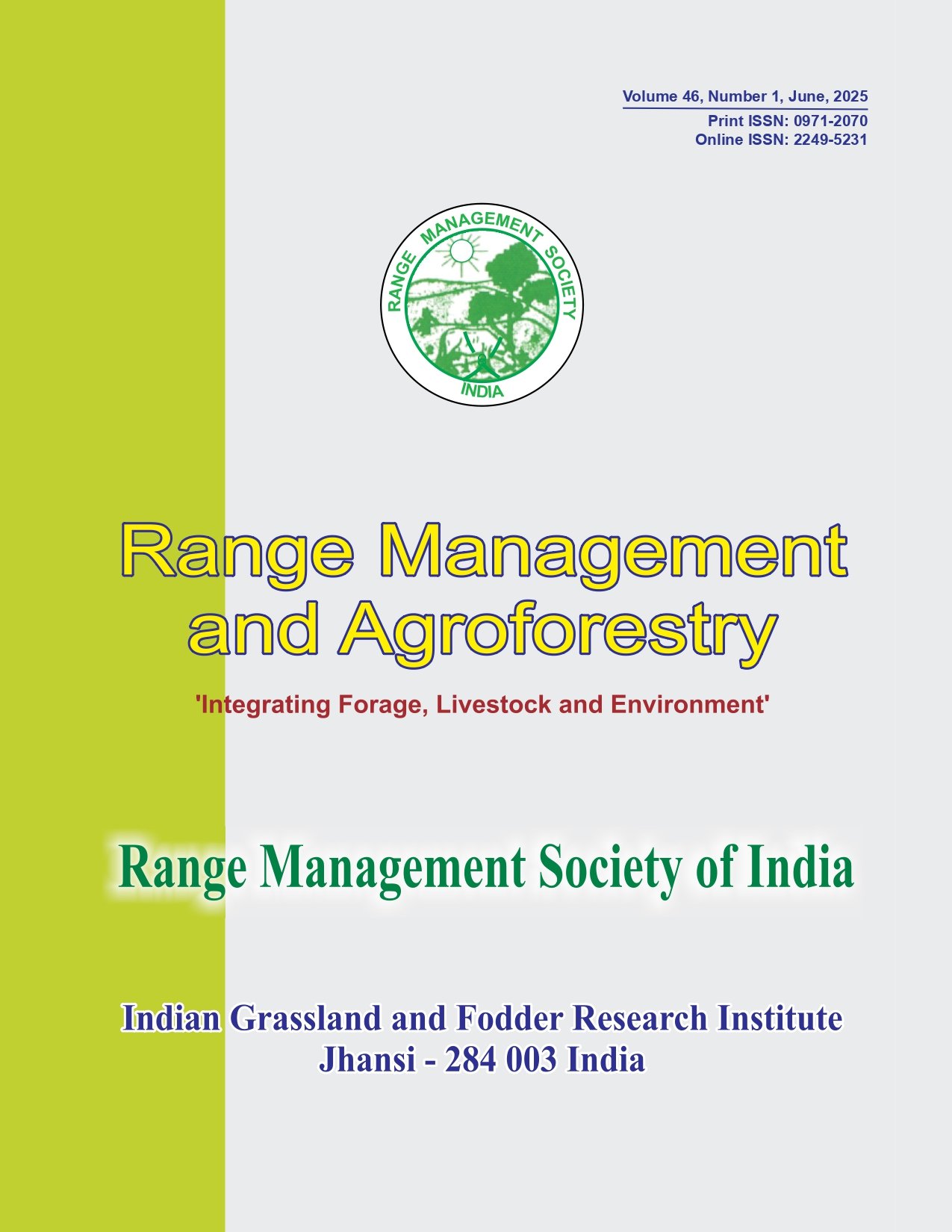Vegetation dynamics under different management interventions in arid rangelands of Rajasthan
Keywords:
Arid rangelands, Dominance, Pasture, Silvipasture, Soil depth, VegetationAbstract
An experiment was conducted from 2015 to 2017 on a community rangeland located in Ajeet Nagar, Bawarli, Jodhpur to study the effect of different management interventions and soil depths on vegetation characteristics. The community rangeland area (10 ha) was divided into three blocks; silvipasture, pasture (both 4 ha) and control (2 ha) blocks. Each block was subdivided according to soil depth; shallow soil (<10 cm) medium deep soil (10-20 cm) and deep soil (>20 cm). In the silvipasture block, two shrub species were planted and two perennial grass species sown in the interspaces. In the pasture block, only perennial grasses were sown at the onset of monsoon in July 2015. Species composition and dominance were monitored and the index of similarity (IS) was computed. A total of 31 species were observed in the study site, with 22.5% and 1% of the total species proportion unique to the silvipasture and pasture systems. Among them, nine species were found with importance value index (IVI) percent of more than 10. Dactyloctenium sindicum was found as most dominant species across soil depths under three different management systems followed by Tephrosia purpurea. The silvipasture system recorded a higher number of species (16 and 18) compared to pasture (14 and 10) and control (10 and 6) in <10 cm and <20 cm of soil depths, respectively; whereas it showed lower number of species in >20 cm soil depth (12) than pasture (16) and higher than control (9). The total dry matter increased from 997 to 1306, 1074 to 1756 and 860 to 1874 kg/ha, respectively under <10 cm, 10-20 cm and >20 cm soil depths due to management practice of silvipasture over control. It could be concluded that interspaces of the shrubs may be utilized with reseeding of perennial grasses in the medium and deep soils for improving the fodder production from silvipasture system and rangeland in low rainfall regions at Jodhpur.




